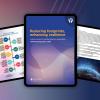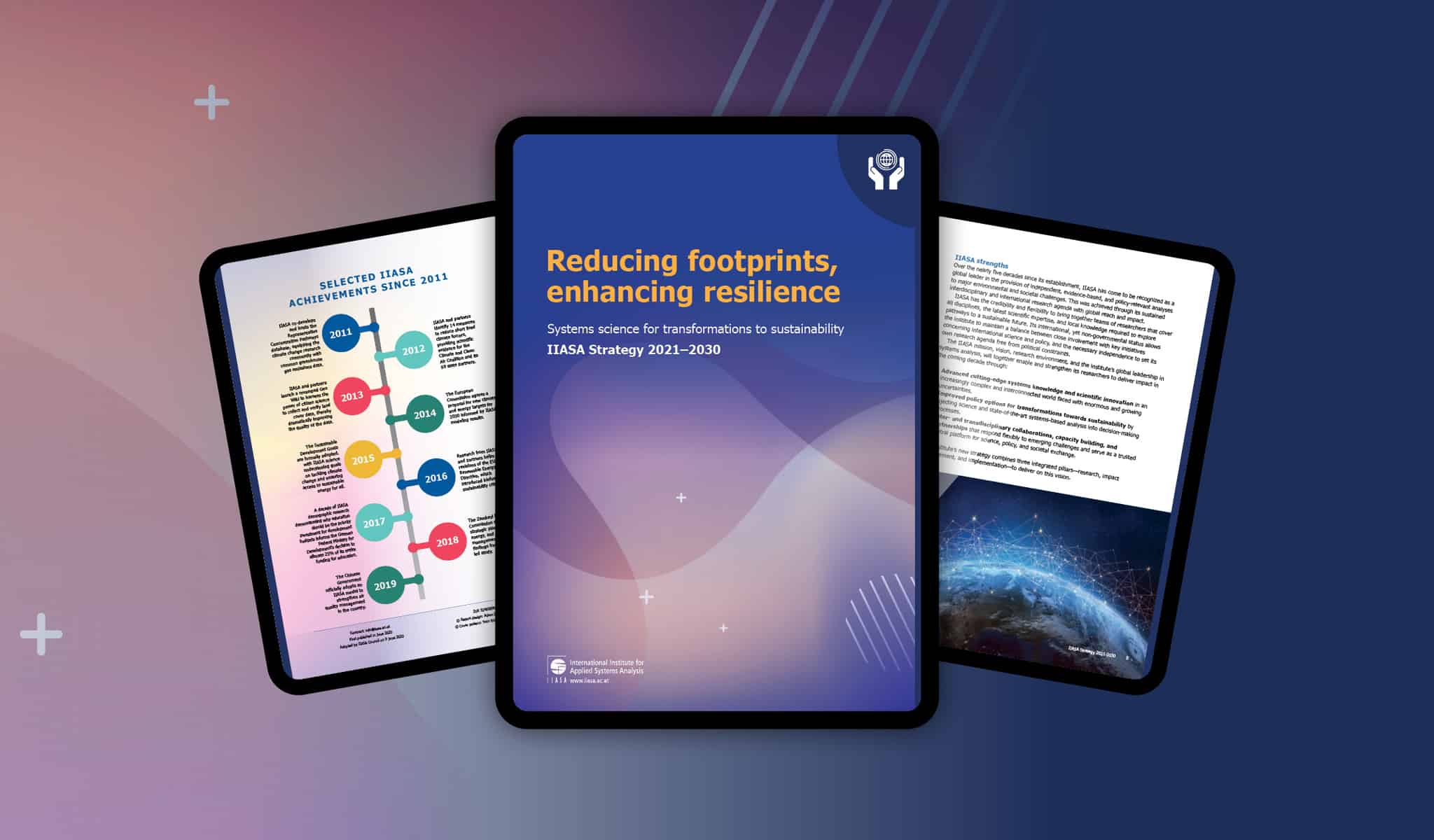
Several members of the IIASA Strategic Taskforce share their views on the bold new IIASA strategic agenda, how it came to be, and what it promises for the future.
What will the world look like in 2030 and beyond? We are living in extraordinary times and our rapidly transforming planet faces multiple global sustainability challenges, threats, and opportunities. How will research institutes like IIASA continue to make meaningful contributions to address these complex issues?
 © IIASA
© IIASA
This is precisely what IIASA has been exploring over the past 18 months while formulating its strategic direction for the next 10 years. Through institute-wide consultations, a strategic taskforce was entrusted with coordinating the process that led to “Reducing footprints, enhancing resilience” – the institute’s ambitious new strategy for 2021-2030 that positions IIASA as the primary destination for integrated systems solutions and policy insights.
A bottom-up inclusive approach
The strategy consultation process was very different to those previously undertaken at IIASA. Acting Transitions to New Technologies Program Director and Energy Program researcher, Shonali Pachauri describes the rationale behind the process:
“While in the past strategic planning had largely been driven by the directorate and program directors, this time, mid-career scientists were to drive the process forward. It was not meant to be one researcher from each program on the taskforce, but it ended up being something like that, so we had a broad representation of disciplines from across the institute. The taskforce was responsible for developing the scientific content of the plan and we did this in an inclusive manner with input from staff through workshops, an online platform, and both informal and formal meetings.”
Reflecting our changing world
The UN Sustainable Development Goals (SDGs) established in 2015, are clearly reflected in the new strategy. Linda See, a researcher in the Ecosystems Services and Management Program, explains:
“We have always worked on sustainable development and transformations but this is now more of a focus compared to the previous strategy. The emphasis is on using our expertise as systems scientists to explore the interrelationships between different SDGs and how there can be synergies and trade-offs in different scenarios to achieve them.”
“Another key shift is that the new strategic plan takes a human-centered approach, placing more emphasis on how people are a core component of pathways towards sustainability and resilient societies,” adds World Population Program Deputy Program Director, Raya Muttarak.
Fellow taskforce member and Acting Water Program Director, Yoshihide Wada, agrees:
“This focus on social science, governance, and human behavior came out of our consultations with staff. IIASA researchers really want to go in this direction. People increasingly understand that with the climate and environmental goals in particular, it can’t only be technology and bioeconomy, it has to be about lifestyles as well, which means we need to strengthen our ability to analyze behavior and identify which levers to pull to encourage lifestyle changes.”
“There is also a stronger focus on biodiversity. The importance of this was borne out of the current COVID-19 crisis. Looking at the origin of the virus and how the pandemic has been aided by the loss of biodiversity – it’s evident that this is crucial,” adds Manager of Library and Knowledge Resources, Michaela Rossini.
Building on strong foundations for continued innovation
Taskforce members agree that the new strategy consolidates the unique strengths of IIASA while providing the space and flexibility for innovation.
“IIASA is unique not only because of our excellence in the fields of energy, environment, climate change, and ecosystems services but also because we have strong, empirically-based analyses and studies from social sciences, which can quantify and forecast relevant demographic, social, and economic dimensions in systems analysis,” says Muttarak.
“I think the new strategy pushes the interdisciplinarity at IIASA even further. The new program structure is very integrated. This is vital to facing today’s sustainability challenges. There are big aspirations in the strategy and it’s our responsibility to translate this into practice. As scientists, we have to be open to change and include elements that we may never have thought of. It makes things very interesting. It makes innovation happen,” Wada adds.
Pachauri explains that IIASA was created as a science-to-policy interface in 1972 and its purpose has always been to bridge divides: both between disciplines and across transnational boundaries. The new strategy really builds on this history. While the institute innovates a lot in terms of models and methods, this always happens through an applied lens of doing something that will ultimately feed into policy.
One of the institute’s key strengths is its relationships with its National Member Organizations and strong global network. These relationships are what make it possible to tackle the real-world problems society faces today. The flexibility to work across networks, countries, and different levels of government is strongly emphasized in the strategy.
A bit like family
According to Muttarak, the process of drawing up the new IIASA strategy has been a great opportunity to work with people from different programs and units. Not only has this allowed everyone involved to get to know their colleagues better, but it has also enhanced team members’ understanding of systems analysis and the importance of IIASA.
“It was challenging and rewarding, a bit like family!” comments Pachauri. “There was a lovely dynamism in the team and although we had a Chair, everyone had a chance to lead at various times in the process.”
“As the only non-scientist I found working on the taskforce invaluable – understanding more about IIASA research and getting to know scientists from across the institute has really enhanced my awareness of what they do and what their needs are going forward,” Rossini concludes.
The full IIASA Strategic Taskforce is comprised of: Luis Gomez Echeverri, Matthias Jonas, Mauricio A. Lopes, Junko Mochizuki, Raya Muttarak, Shonali Pachauri, Michaela Rossini, Linda See, Thomas Schinko, Yoshihide Wada, and Fabian Wagner.
Note: This article gives the views of the author, and not the position of the Nexus blog, nor of the International Institute for Applied Systems Analysis.